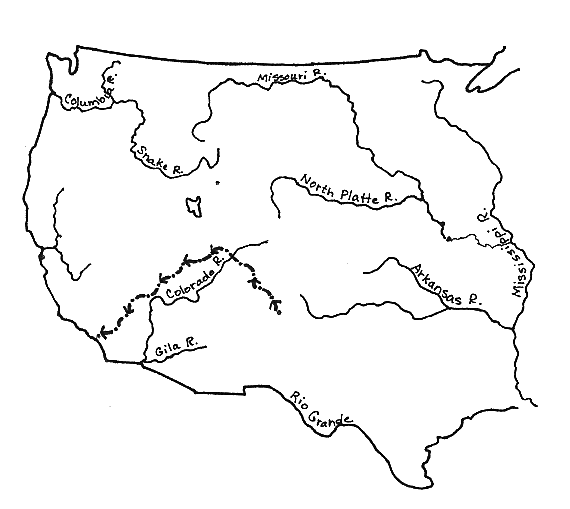| ||||
|
| ||||
|
WILLIAM
WOLFSKILL
 Lived:
1798-1866
Lived:
1798-1866
Explored California in: 1830-1833
Exploring for: United States
Explored: by land in sourth/central California
In 1830 the
EARLY HISTORY
William Wolfskill was the oldest of twelve children. He was born in Boonesborough, Kentucky, but the family moved to Boone’s Lick, Missouri, when William was about 11 years old. Here he learned the skills of a frontiersman, trapping, shooting, and surviving in the woods. Here, also, he met Christopher “Kit” Carson, who became a famous trapper and scout.
In the early 1820s, Wolfskill became friends with another trapper, Ewing Young, whose home base was in Taos, New Mexico. Wolfskill and Young operated a trading post here that stocked supplies for trappers. During these years, Wolfskill made many trapping expeditions throughout Texas, New Mexico, and the surrounding area.
BACKGROUND
During his years around New Mexico, Wolfskill heard reports from trapper Jedediah Smith about the beauty of California and the money that could be made by trapping furs there.
As an American citizen, Wolfskill knew that he could not trap legally on Mexican land. Trappers who did so ran the risk of having their haul taken away from them. So Wolfskill applied for Mexican citizenship and became a naturalized Mexican citizen. He changed his name to José Guillermo Wolfskill. Now he could apply for and receive a Mexican trapping license, which he did.
Wolfskill’s next challenge was to find the best route between New Mexico and California.
WOLFSKILL’S JOURNEY
Wolfskill left Santa Fe in 1831 with a group of about twenty men. Following trails used earlier by Spanish slave traders and American trappers, the group headed northwest from Santa Fe into southern Colorado. They followed the Delores River into Utah, then turned west to the Sevier River and then south. In this way they avoided the barrier of the Grand Canyon of the Colorado.
Their route after turning south in Utah was similar to that followed by Jedediah Smith a few years earlier. Wolfskill’s group stopped at the Mohave Indian villages along the southern Colorado River, and then crossed into the Mohave Desert and California. The trek across the desert brought them to the San Bernardino Mountains, which they crossed through what is now called Cajon Pass. Then came the welcome shelter of Mission San Gabriel, where visitors were always given food and lodging.
The travelers then went on to the town of Los Angeles, but here the group separated. One of the group was George C. Yount, who went north and settled in the Napa Valley. Wolfskill went back to Mission San Gabriel. The padre, Father Sánchez, let Wolfskill stay at the mission while he had a ship (a schooner) built.
The ship was finished in 1832, and Wolfskill sailed south from San Pedro harbor, hoping to find a fortune in sea otter furs. The sea otters were not as plentiful as he had hoped, and by the end of the year, Wolfskill sold his ship. He now gave up the life of a trapper, and turned to being a settled farmer.
WHAT HE ACCOMPLISHED
The route that Wolfskill opened between Santa Fe and Los Angeles became known as the Old Spanish Trail. It was a central route into California, being north of the villages of Indians whose hostility had made the southern route dangerous. The Old Spanish Trail was later part of the Santa Fe Trail, followed by many American pioneers who came to California in the mid-1800s. The route was also used by sheep herders and traders until the late 1860s.
Though credit for opening the Old Spanish Trail into California is enough to insure that William Wolfskill would be remembered in the history of the state, his role here in later years was even more significant.
LATER YEARS
In 1833 Wolfskill got married,
bought some land near Los Angeles, and settled down to become a farmer. He
began growing grapes, and by 1846 had won an award for having the best vineyard
in California. He planted groves of orange, lemon, and lime trees, and soon
had the largest citrus orchards in the
Wolfskill became one of the wealthiest men in California, and a leader in the agriculture industry that was so important to the early growth of the state. He served as an official in Los Angeles County, and is credited with opening the first American school in California.
Several of William’s brothers followed him to California, and he acquired land grants for them in the northern Central Valley. There, too, Wolfskill orchards and farms did very well.
William Wolfskill died in 1866, having been an important part of the change of California from a Mexican province to an American state.